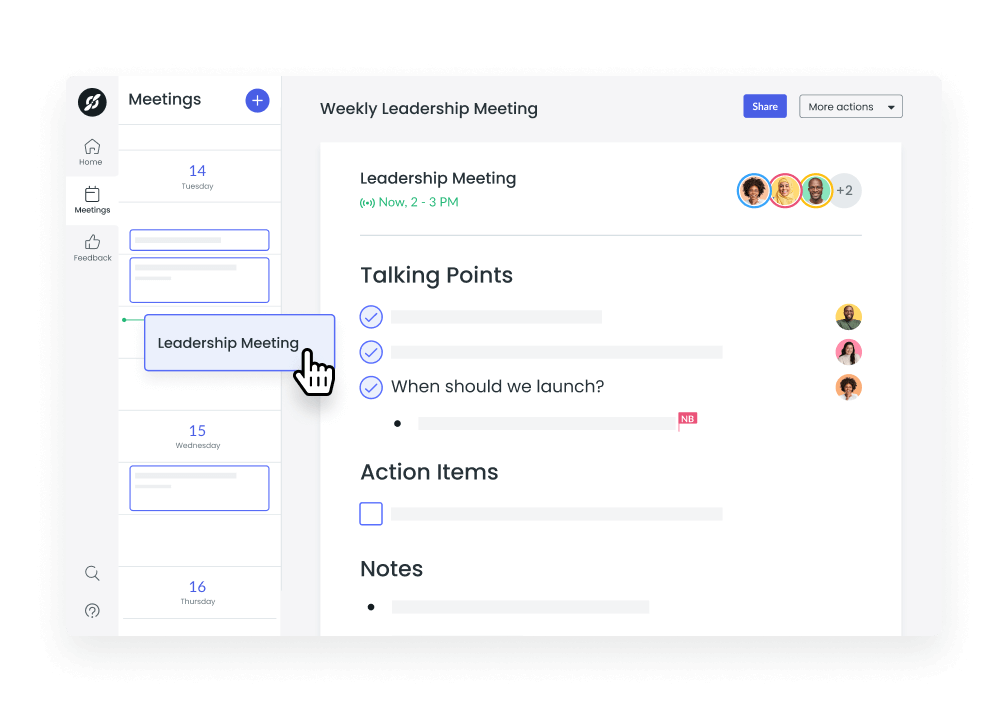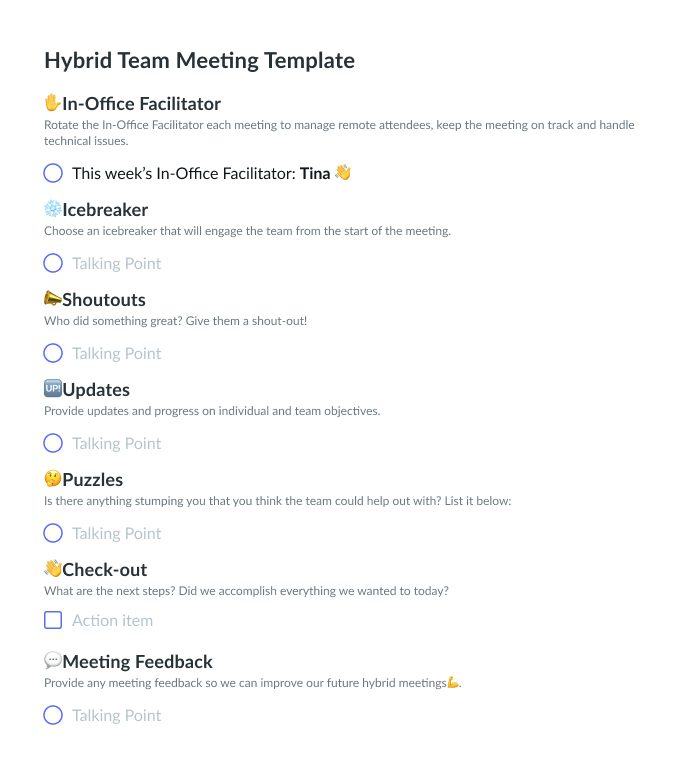This is What a Healthy Work Schedule Really Looks Like
Learn how to maintain a healthy work-life balance, avoid burnout, and create a schedule that works for you and your employees today.
It’s a Sunday evening and you’re headed to bed after a relaxing weekend spent with loved ones… or so you thought. In actuality, you did spend the weekend with family and friends, but it wasn’t the carefree break you anticipated. You spent your entire Friday evening wrapping up the final details of a proposal document at the dinner table. You felt equally as stressed out since you were guilty of working when you should have been focused on the conversation in the dining room. Instead of enjoying the birthday party you had hoped to attend with your daughter on Saturday, you dropped her off in favour of spending a few hours catching up on administrative tasks at the office. You thought to yourself, “One more task and I can call it quits for the weekend!”, knowing that the cycle of stress would permeate in the coming weeks.
Let’s talk about healthy work schedules, why it’s important for your team to maintain one, and how work-life balance can make you and your colleagues feel more productive than ever!
- What is a healthy work schedule?
- Benefits of creating a healthy work schedule
- Tips for managers on how to create a healthy work schedule
What is a healthy work schedule?
As the saying goes, you can’t pour from an empty cup. A healthy work schedule means that an employee is provided with enough flexibility within their role that they’re able to prioritize their wellbeing and can thrive in the workplace with minimal stress. The typical healthy work week consists of 40 hours or less (A 38-hour week is optimal according to a study by time management expert Laura Vanderkam as relayed by Atlassian), a consistent schedule, and an array of workplace systems that set employees up for success. Healthy work schedules also consist of adequate paid time off for rest and vacation.
On the contrary, if you consistently spend your time off and weekends consumed with thoughts of work, you feel stressed out often, or you’re dealing with bouts of burnout due to your role, you’re likely suffering from the impact of an unhealthy work schedule.

Foster a healthy work schedule
Host both synchronous and asynchronous meetings with collaborative meeting agendas to foster a healthy work schedule. Try a tool like Fellow today!

Benefits of creating a healthy work schedule
1More work-life balance
A healthy work-life balance will look different for everyone. For example, an employee with children may require an altered work schedule that accommodates when school starts and ends. Alternatively, a parent with a young child may choose to work early in the morning and late in the evenings with a mid-day break. Regardless of lifestyle, having a work schedule that works for each individual will make tasks easier, improve happiness levels, and increase efficiency.
2Better employee retention rates
Employees who feel appreciated at work will remain with their company for longer periods of time. On the flip side, overworked employees are more prone to leaving for opportunities elsewhere. A recent article by MIT Sloan Management Review reported that companies with a reputation for a healthy work culture experience lower-than-average turnover rates. Some short-term steps that promote healthy work-life balance and increase employee retention include offering remote work arrangements, professional growth opportunities, and predictable schedules.
3Increased productivity and health
We all have colleagues who love to wear their busyness with a badge of honour. Next time your coworker starts bragging about their 70-hour workweek, you can casually mention that putting in more hours doesn’t equate to higher productivity. In fact, research shows that there is a steep decline in your efficiency after 55 hours. Working long hours also has negative implications on individuals’ health. The World Health Organization reports that work-related stress induced by long work weeks leads to an increased risk of stroke and heart disease. If you have healthy habits, your work should not rob you of your free time or your health. Your stress levels should also remain at bay during regular working days.
Tips for managers on how to create a healthy work schedule
- Offer flexible working arrangements and hours
- Provide (and encourage) paid time-off
- Use technology to your advantage
- Encourage asynchronous work
- Respect others’ working hours
- Send meeting invitations well in advance
- Ask for feedback
- Lead by example
1Offer flexible working arrangements and hours
Perhaps your employees feel on top of their tasks but wish they weren’t confined to a nine-to-five work schedule. If your team is capable of performing their duties from home, implement flexible working arrangements and hours with specified guidelines so your team can work when they feel most focused. Non-traditional schedules are gaining global traction as companies realize that flexible hours have many benefits. You can use Fellow’s hybrid team meeting template to create a positive experience for different types of attendees no matter where they’re located!
2Provide (and encourage) paid time-off
Did you know that American employees aren’t taking half of their vacation days? In fact, Forbes reported in 2017 that the average employee takes only half of their allocated vacation time. This is because employees fear getting behind, think they can’t delegate their workload if they take a break, and are concerned about what could go wrong if they disconnect. A healthy workplace encourages employees to take time off when needed and discourages work during vacation periods. As a manager, you should remind your employees of their paid time off, and lead by example by taking your own.
3Use technology to your advantage
The last few years have taught us that remote and hybrid work is possible for a lot of employees since there are many helpful digital tools that allow us to connect virtually. Make sure you have a full suite of virtual platforms your employees can use to communicate and collaborate effectively while working from home. Don’t forget to incorporate Fellow’s hybrid team meeting template if your teammates are planning to gather remotely:

4Encourage asynchronous work
Establish processes, systems, and tools that work asynchronously so that you and your team can work together, apart. Take lower priority items to Slack, Microsoft Teams chats, and email. Prioritize the working hours you overlap with your teammates for high-priority projects and group brainstorming sessions that will yield high results. Learn more about how asynchronous meetings can cut down your meeting time while keeping everyone on the same page.
5Respect others’ working hours
You don’t want an employee in a different time zone bothering another teammate about a deliverable when they’re off the clock. Whenever you want to schedule a meeting, ensure the meeting time is at a reasonable hour within the time zone and allocated working hours of each teammate. Always include time zones and dates when scheduling meetings and assigning deadlines. If you reach out to a colleague who has different working hours than your own about a non-urgent task, respect their time by using an asynchronous communication tool like email so they can respond when they’re able.
6Send meeting invitations well in advance
Surprises are great for baby showers and birthdays; they’re not so great for meetings. Ensure members of your team have enough time to plan their day by sending meeting invitations at least 24 hours in advance. Include a clear meeting agenda that outlines expectations for the attendees so they can plan their impending action items. Use calls to action in your email subject lines so your team immediately knows what to expect and is aware of the subject matter’s level of urgency.
7Ask for feedback
As a manager, you should be asking your employees for consistent positive and constructive feedback. During these conversations, ask individuals for their opinions on current workplace culture to identify areas for improvement. Ask questions like, “Are there any systems or processes that hinder our workplace culture?” or more specifically, “What can I do as a manager to make our team’s schedule healthier?”. When it comes to meetings, ask your teammates which weekdays and times work best for their calendars. Use Fellow to get real-time feedback on meetings, projects, and performance from your team to help implement a healthy work culture.

8Lead by example
If you want healthy employees, you too will have to model healthy behaviours. This means sending emails and delegating tasks only during working hours, taking your annual vacation days often or when you need a break, and creating workplace policies and systems that encourage work-life balance, rather than the toxic hustle culture and performative workaholism that has become the norm within many organizations.
Health is wealth
Someone once said that an individual’s greatest wealth is their health. No matter how much you love your job, no one wants to feel overworked, underappreciated, or constantly stressed out. By implementing a healthy work schedule for you and your team, you’ll create a positive culture and help your colleagues feel ready to tackle any challenge. If you’re not sure where to start, lean on your team and their feedback. A deep breath and some active listening will ensure you’re on track to creating a healthier workplace.










